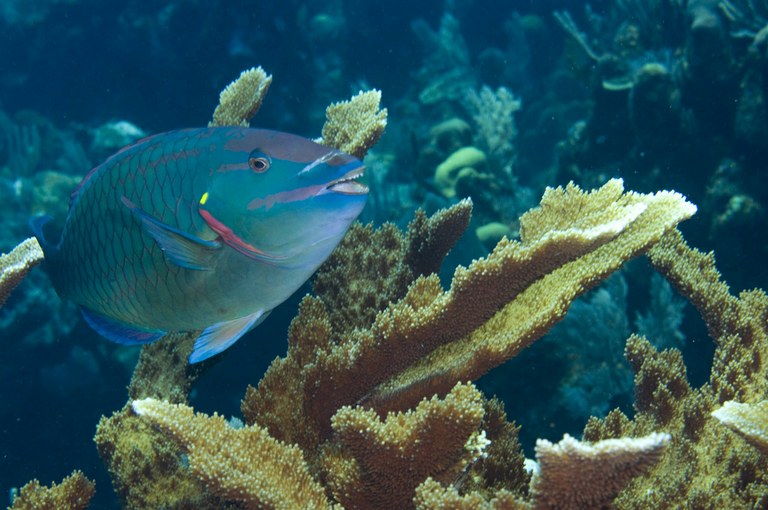Reservoirs of zooxanthellae around a coral reef are vital for coral larvae settlement. Understanding where and how this zooxanthellae got there and are maintained are important factors to know when studying coral reef ecology.
Researchers Carolina Castro-Sanguino and Juan A. Sánchez recently published a paper in The Royal Society journal Biology Letters documenting how parrotfish contribute to the overall zooxanthellae reservoir in and around coral reefs. The interesting thing about their paper is how they believed that parrotfish contribute to this reservoir: through their feces. They contend that parrotfish feeding on coral polyps are able to digest and pass through to their feces viable Symbiodinium spp. zooxanthellae from the coral and that this zooxanthellae is then able to contribute to the reservoir needed for future coral larvae settlement.
In the paper, Castro-Sanguino and Sánchez studied the feeding patterns and subsequent defecation locations of the stoplight parrotfish, Sparisoma viride. Three different locations in the Caribbean were chosen and individual parrotfish were monitored for 5 and 15 minute intervals noting where they fed, what they fed upon, amount of feces, and where the feces were spread relative to where they had been eating.
What they found were that, yes, the Symbiodinium spp. were found in their feces and that the bacteria that were spread in the feces were viable and cultivable and that cell cultures yielded Symbiodinium spp. zooxanthellae in clades A, B and G.
This finding highlights the necessity of parrotfish in and around coral reef waters in maintaining the health and vitality of coral reefs.
(via Biology Letters)











0 Comments